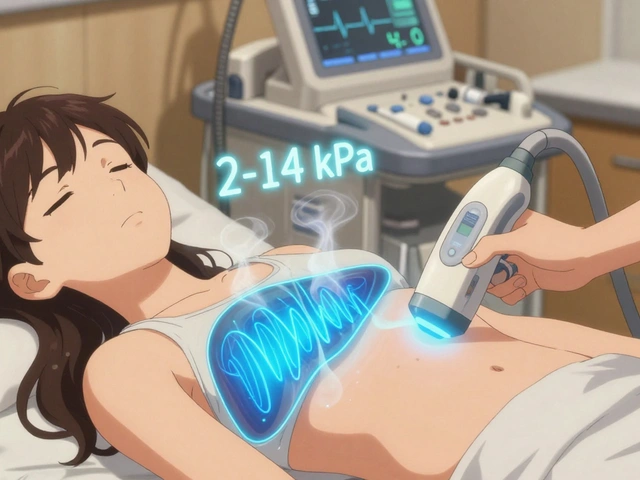If you’ve ever felt dizzy, sweaty, and utterly miserable on a bumpy bus ride, a rocking boat, or a turbulent flight-you know how quickly a trip can turn sour. Travel sickness, also called motion sickness, doesn’t care if you’re a seasoned traveler or a first-timer. It hits without warning, and it doesn’t care how much you wanted to see that new city or visit your family. The good news? You can stop guessing what works and start carrying what actually helps.
What Causes Travel Sickness?
Motion sickness happens when your brain gets mixed signals. Your eyes see one thing-like a book in your lap-while your inner ears feel the motion of the car or plane. Your body senses movement, but your eyes don’t. That mismatch triggers nausea, dizziness, cold sweats, and sometimes vomiting. It’s not weakness. It’s biology. About 1 in 3 people experience it at least once in their life, and kids between 2 and 12 are most affected. Adults can outgrow it, but many don’t.
What Belongs in a Travel Sickness Survival Kit?
A survival kit isn’t about packing everything you own. It’s about carrying the few things that work fast, reliably, and without side effects. Here’s what you actually need:
- Over-the-counter motion sickness pills like dimenhydrinate (Dramamine) or meclizine (Bonine). Take one 30 to 60 minutes before travel. Meclizine lasts longer and causes less drowsiness.
- Ginger supplements or ginger candies. Studies show ginger works as well as some medications for nausea. Look for 1,000 mg capsules or chewable ginger candies with real ginger root extract. Avoid sugary “ginger-flavored” candies-they won’t help.
- Acupressure wristbands. These simple bands apply pressure to the P6 point on your inner wrist. Brands like Sea-Bands are drug-free and safe for kids and pregnant women. They don’t work for everyone, but they’re worth trying-especially if you want to avoid pills.
- Peppermint oil or peppermint gum. The scent of peppermint can calm the stomach. Keep a small bottle of essential oil (diluted with a carrier oil) or chew peppermint gum during travel. Don’t apply oil directly to skin without diluting it.
- Small, dry snacks. Crackers, plain toast, or rice cakes. Eat a little before you leave and sip them slowly during the trip. Avoid greasy, spicy, or sweet foods-they make nausea worse.
- Plastic bags and wet wipes. One small ziplock bag per person. Wet wipes for cleanup. Don’t wait until you need them to realize you didn’t pack any.
- A reusable water bottle. Dehydration makes motion sickness worse. Sip water slowly. Avoid alcohol, coffee, and soda.
- Dark sunglasses. Bright light and flickering scenery (like passing trees or billboards) can trigger symptoms. Sunglasses reduce visual overload.
Where to Store Your Kit
Keep your kit easy to reach. Don’t shove it in your checked luggage. A small, zippered pouch (like a toiletry bag) fits perfectly in your coat pocket, purse, or backpack side pocket. Label it clearly so you don’t dig through everything when you start feeling sick. If you’re flying, pack pills and liquids in your carry-on. TSA allows medication in reasonable amounts, even if it’s over 3.4 oz, as long as you declare it.

What Not to Pack
Some things people think help-don’t. Save your money and space:
- Antihistamines like Benadryl. They cause heavy drowsiness and can leave you groggy for hours. Not ideal if you need to be alert.
- Alcohol. It dehydrates you and worsens nausea.
- Large meals. Eating too much before travel is a recipe for disaster.
- Strong perfumes or scents. They can trigger nausea in sensitive people-even if they’re supposed to be “fresh.”
Pro Tips That Actually Work
Items help, but behavior matters just as much.
- Choose your seat wisely. In a car, sit in the front. On a plane, pick a seat over the wing-it moves the least. On a boat, stay near the center and on the upper deck.
- Look at the horizon. Focus on a fixed point far away. This tells your brain your body is moving in sync with your eyes. Don’t read, scroll, or look down.
- Get fresh air. Open a window if you can. On a plane, ask for a seat near the vent. Cool air helps.
- Rest before you go. Being tired makes motion sickness worse. Get a good night’s sleep before your trip.
- Try distraction. Listen to music or an audiobook with headphones. Keep your mind off the feeling.
For Kids and Pregnant Travelers
Kids under 12 are especially prone. Stick to ginger candies, acupressure bands, and dry snacks. Avoid medications unless approved by a doctor. For pregnant women, ginger and Sea-Bands are safe. Always check with your OB-GYN before taking any pills-even over-the-counter ones.

What to Do If You Start Feeling Sick
Don’t wait until you’re vomiting. Act fast:
- Stop reading or using your phone.
- Look out the window at the horizon.
- Take a ginger candy or sip water.
- Put on your wristband if you haven’t already.
- Breathe slowly-inhale through your nose for 4 counts, hold for 4, exhale for 6.
If you’re on a plane, ask the flight attendant for a cold towel. If you’re in a car, ask to stop and walk around for 5 minutes. Movement helps reset your balance system.
When to See a Doctor
Most travel sickness is harmless and goes away once the motion stops. But if you get dizzy or nauseous even when you’re not moving-like when standing still or turning your head-that’s not motion sickness. It could be an inner ear issue, migraines, or something else. See a doctor if:
- Symptoms last more than a few hours after travel ends
- You have hearing loss, ringing in your ears, or severe headaches
- You get motion sickness on every trip, even short ones
Can you cure travel sickness?
There’s no permanent cure, but most people learn to manage it. Some adults outgrow it. Others build tolerance over time by gradually exposing themselves to motion. Medications and natural remedies help reduce symptoms significantly, so you can travel without fear.
Do travel sickness pills make you sleepy?
Some do, some don’t. Dimenhydrinate (Dramamine) often causes drowsiness. Meclizine (Bonine) is less sedating. Always check the label. If you need to drive or stay alert, choose meclizine or go with non-medication options like ginger or wristbands.
Is ginger really effective for motion sickness?
Yes. Multiple studies, including one published in the Journal of Travel Medicine, found ginger as effective as dimenhydrinate for reducing nausea without the side effects. It works by calming the stomach and reducing inflammation in the digestive tract.
Can children use acupressure wristbands?
Yes. Sea-Bands and similar brands are FDA-cleared for children as young as 2. They’re drug-free, reusable, and safe. Many parents use them for car rides, flights, and cruises.
What if I forget my kit?
Don’t panic. Buy ginger candy at a gas station or airport. Sip water. Look out the window. Breathe slowly. Even simple actions can help. If you’re on a plane, flight attendants often have ginger tea or crackers available.
Final Thought: Be Prepared, Not Panicked
Travel sickness doesn’t have to ruin your adventures. With a simple, smart kit and a few habits, you can take control. You don’t need to avoid travel. You just need to be ready. Pack your kit once, keep it in your bag, and forget about it-until the day you need it. Then, you’ll be glad you did.






9 Comments
Jenny Lee
November 19, 2025Just packed my kit last week for a road trip-ginger candies and Sea-Bands saved my life. No pills, no drowsiness, just chill vibes.
Ram tech
November 20, 2025lol why even bother with all this? i just close my eyes and hope for the best. also why is everyone so obsessed with ginger? its just a root bro.
Jeff Hakojarvi
November 21, 2025Hey Ram, i get it-sometimes you just wanna wing it. but trust me, even if you think you're fine, having that little kit in your bag means you're never caught off guard. i used to be the same guy-until i puked on a plane during my cousin's wedding. never again. ginger + wristbands + water = my new holy trinity. also, the horizon tip? game changer. stop looking at your phone.
Timothy Uchechukwu
November 22, 2025Why do Americans always think they need a whole kit for motion sickness? In my country we just drink tea and pray. This overpreparation is weak. You're not going to Mars, it's a bus ride. Also why is everyone ignoring the real issue? The government should fix the roads and planes, not make us carry ginger.
Ancel Fortuin
November 22, 2025Of course the government doesn't fix roads. That's because they're in cahoots with Big Ginger and the pharmaceutical industry. You think Sea-Bands are really 'drug-free'? Nah. They're nanotech trackers disguised as wristbands. The FDA is just a front. I've seen the documents. Look up Project MotionSick.
Hannah Blower
November 23, 2025How tragically bourgeois. You're all treating motion sickness like a minor inconvenience to be commodified. The real issue is the alienation of the body in late-stage capitalism-your inner ear is screaming for authenticity while you're distracted by peppermint gum and branded wristbands. You don't need a kit. You need to confront your existential dissonance. Also, ginger is just a capitalist plant.
Gregory Gonzalez
November 23, 2025Wow. A whole article about ginger and wristbands. And you call this advice? I've seen people in Tokyo just stare at the horizon and meditate. No supplements. No bags. Just presence. Your entire culture is a crutch. I'm embarrassed for you.
Ronald Stenger
November 24, 2025Forget ginger. Forget wristbands. Real men use whiskey. One shot before takeoff and you don't feel a thing. I've flown 12 times in a week after a 24-hour shift-no pills, no bands, just bourbon and grit. This whole guide is for people who can't handle life. You want to survive travel? Build toughness. Not a checklist.
Samkelo Bodwana
November 25, 2025I appreciate everyone's input here, even the wild ones. I'm from South Africa and we've got a lot of long drives and rough roads here. I used to be the guy who just powered through until I nearly passed out on a bus to Cape Town. What changed everything for me wasn't any single item-it was combining a few things. I started with the wristbands, then added a small bottle of diluted peppermint oil (never direct skin!), and I make sure I sit by the window and breathe slow. I also learned to accept that sometimes, I just need to rest. No shame in closing your eyes, even if you're not sleeping. It's not weakness. It's wisdom. And honestly? I still forget my kit sometimes. But now I know the basics: water, air, horizon, calm. That's enough. We're all just trying to get from A to B without losing our lunch. No need to turn it into a cult.